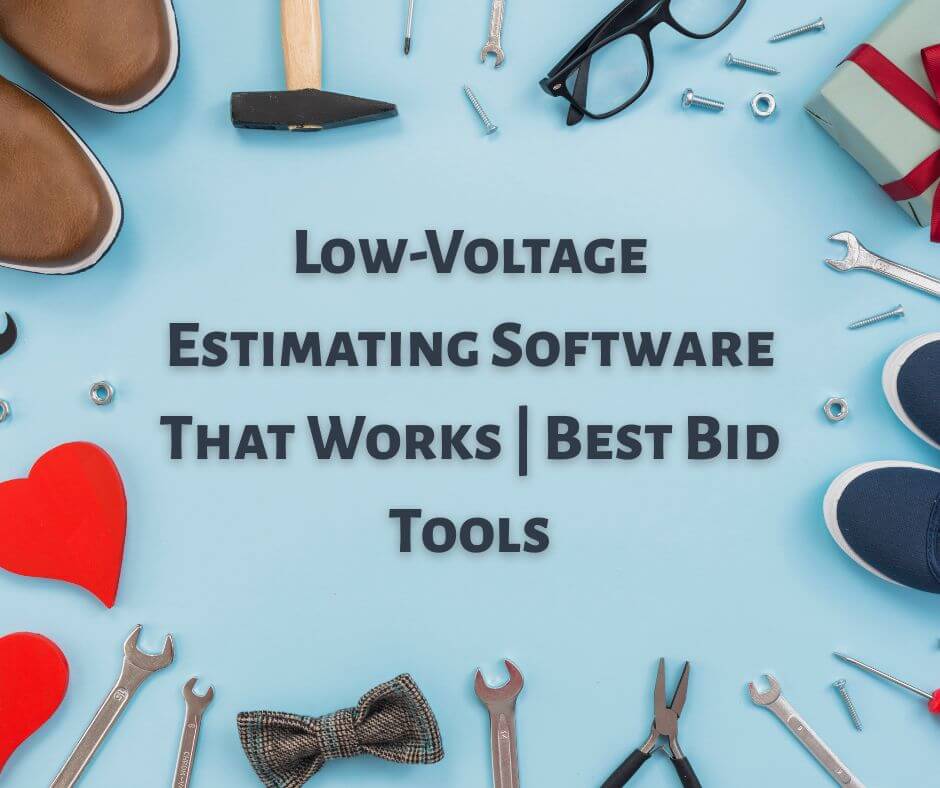
Low-voltage electrical estimating is complex, requiring precise material cost calculation and labor anticipation, which directly impacts project success.
Yet, many contractors and engineers continue to face inefficiencies due to outdated tools and limited software options. If you’re still relying on Excel spreadsheets or struggling with insufficient tools, you’re likely losing time, money, and bids to competitors.
This blog is designed to help you master low-voltage electrical estimating by exploring its challenges, the limitations of traditional tools, and how specialized software like Best Bid Next Generation can revolutionize your approach.
Please stick with us for actionable tips, expert insights, and a path to more accurate, cost-effective estimations.
 Investing in professional estimating software is not just a productivity boost; it’s a long-term financial advantage:
Investing in professional estimating software is not just a productivity boost; it’s a long-term financial advantage:
The Challenges of Low-Voltage Electrical Estimating
Low-voltage electrical estimating, which often includes tasks like wiring for data, security systems, and communications, demands precision and adaptability. However, the process comes with several challenges:- Lack of Specialized Software
- Excel Spreadsheets
- Outdated Solutions
Why Traditional Tools Fall Short?
If you’re still using spreadsheets or outdated software for your low-voltage electrical estimates, here’s why it’s time for an upgrade:- Limited Scalability
- Time-Consuming & Error-Prone
- Outdated Pricing
- Lack of Flexibility
Key Features Every Low-Voltage Estimating Software Must Have
Upgrading to professional low-voltage estimating software can streamline your workflow while increasing accuracy. Here are the essential features to look for:- Unlimited Database Capabilities
- Customizable Options
- On-Screen Takeoff
- Customizable Proposals
- Integration and Support
Introducing Best Bid Next Generation
For contractors ready to take the next step, Best Bid Next Generation stands out as an industry leader in electrical estimating software. Here’s what makes it unique:- No Recurring Fees
- Built-In Tools
- User-Friendly Interface
- Lifetime Updates & Support
Tips for Transitioning to Professional Estimating Software
Switching from traditional tools to advanced software can feel daunting, but it doesn’t have to be. Follow these steps to ease the transition:- Assess Your Needs
- Schedule a Demo
- Training Resources
Cost-Effectiveness and Long-Term Advantages
 Investing in professional estimating software is not just a productivity boost; it’s a long-term financial advantage:
Investing in professional estimating software is not just a productivity boost; it’s a long-term financial advantage:
- Reduced Labor Costs
- Accuracy Saves Money
- No Ongoing Fees
Take Control of Your Low-Voltage Electrical Estimating Today
Success in electrical contracting depends on accuracy, efficiency, and adaptability. With outdated tools, you’re at risk of falling behind. Instead, empower your business with professional estimating software like Best Bid Next Generation. Act Now:- Call us today at 800-941-7028 for more information.
- Schedule a walkthrough to see Best Bid in action.
- Visit Best Bid Tools to learn more and start your free trial.









